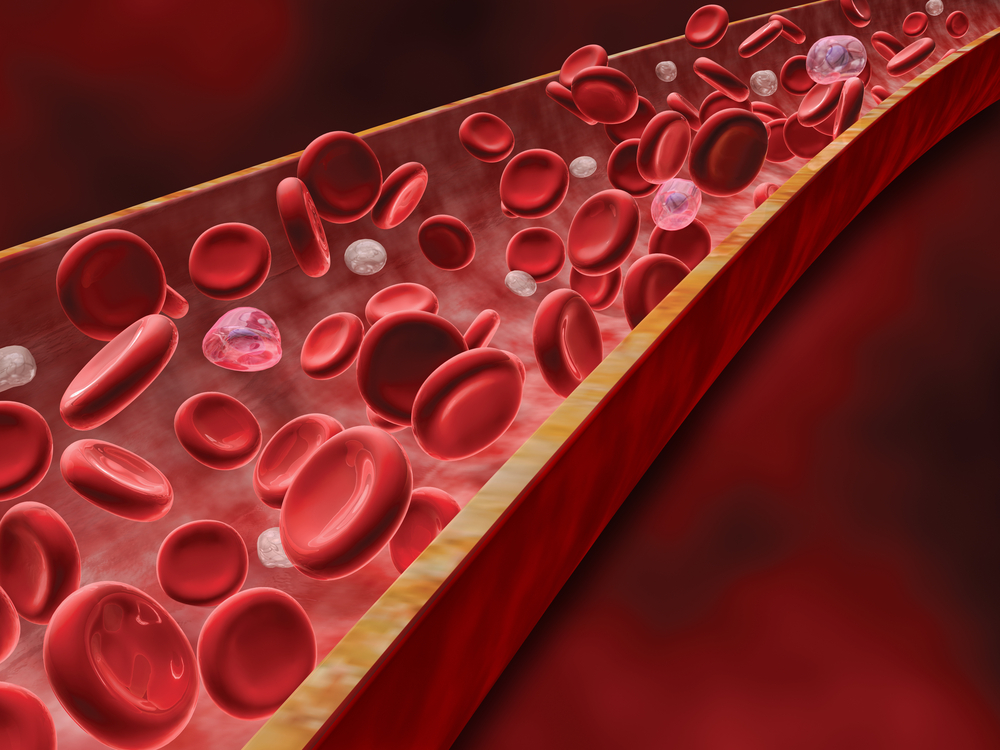Simple Blood Test May Become Useful Biomarker of Alzheimer’s Progression and Treatment Response, Study Suggests

Blood levels of a nerve cell-derived component, known as neurofilament light chain, could be used as a biomarker of disease severity and treatment response in patients with Alzheimer’s disease, a study suggests.
The study, ”Association Between Longitudinal Plasma Neurofilament Light and Neurodegeneration in Patients With Alzheimer’s Disease,” was published in the journal JAMA Neurology.
Monitoring of Alzheimer’s disease progression is currently based on advanced imaging techniques — such as magnetic resonance imaging (MRI) and positron emission tomography (PET), as well as invasive analyses of cerebrospinal fluid (CSF, the liquid surrounding the brain and spinal cord) — to check for key disease markers.
Imaging techniques are expensive, and CSF analyses are invasive because the procedure involves a hollow needle being inserted between the bones of the lower back to collect a sample of the liquid. Therefore, there is a need to develop less expensive and less invasive methods to monitor Alzheimer’s progression and facilitate therapy development, researchers say.
“Standard methods for indicating nerve cell damage involve measuring the patient’s level of certain substances using a lumbar puncture, or examining a brain MRI. These methods are complicated, take time and are costly,” Niklas Mattsson, researcher at Lund University, physician at Skåne University Hospital, Sweden, and the study’s lead author said in a press release.
Neurofilament light (NfL) is a protein exclusively present in neurons, and is released into the blood and CSF when neurons are damaged or die. Previous research has shown that the levels of NfL is higher in the blood of people with neurodegenerative diseases, such as multiple sclerosis. In Alzheimer’s, the levels of NfL are also increased and correlate with disease progression, namely brain skrinkage (atrophy), low metabolism, and cognitive decline.
This suggests that NfL may be a potential biomarker — of easier access — to track Alzheimer’s disease progression. “Measuring NfL in the blood can be cheaper and is also easier for the patient,” Mattsson added.
The researchers evaluated whether measuring NfL over time correlated with neurodegeneration. They analyzed blood samples retrieved annually from 1,583 individuals — 327 with Alzheimer’s, 855 with mild cognitive impairment, and 401 healthy controls.
Nearly half (45.2%) of the participants were women with a mean age of 72.9 years. Patients were followed between a period of six months and 11 years.
The researchers saw that at the beginning of the analyses, NfL levels were higher in patients with mild cognitive impairment (37.9 ng/L) and Alzheimer’s disease (45.9 ng/L) compared with those of the control group (32.1 ng/L).
Moreover, NfL levels increased every year in all groups but more significantly in patients with Alzheimer’s, compared with those with mild cognitive impairment or the controls.
When researchers compared these results with the levels of established CSF biomarkers of Alzheimer’s — namely amyloid-beta 42 (Aβ42), phosphorylated tau (the protein responsible for neurofibrillary tangles observed in the brain of Alzheimer’s patients), and total levels of tau protein — they saw an association between higher NfL values at baseline and these validated biomarkers. A similar correlation was found between NfL levels and medical imaging reports of brain damage.
“We discovered that the NfL concentration increases over time in Alzheimer’s disease and that these elevated levels also are in line with the accumulated brain damage, which we can measure using lumbar punctures or magnetic resonance imaging,” Mattsson said.
Overall, these results support the use of NfL as a non-invasive biomarker to monitor Alzheimer’s disease, but also for evaluating the efficacy of investigational disease-modifying therapies in clinical trials.
“Within drug development it can be valuable to detect the effects of the trialled drug at an early stage and to be able to test on people who do not yet have full-blown Alzheimer’s,” Mattsson added.
“Measuring the NfL concentration in the blood could make things easier for future drug development, both through following the effects of the drug and by including test subjects who display markers of nerve cell deterioration. This approach will enable more reliable conclusions to be drawn from the results,” he said.
The researchers are currently working to validate NfL as a non-invasive biomarker available for use in future clinical trials.
“Preparatory work is ongoing at Sahlgrenska University Hospital in Gothenburg to make this method available as a clinical procedure in the near future,” Mattsson said. “Physicians can then use the method to measure damage to nerve cells in Alzheimer’s disease and other brain disorders through a simple blood test.”






